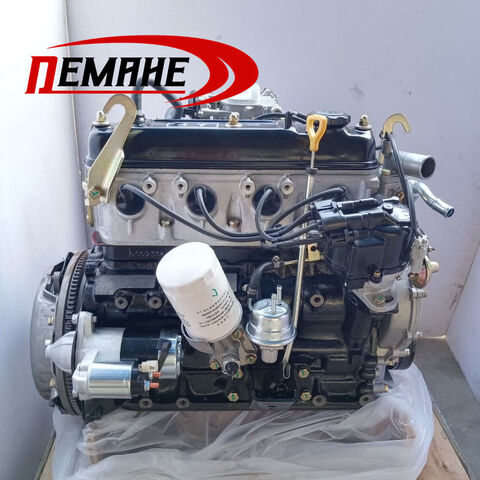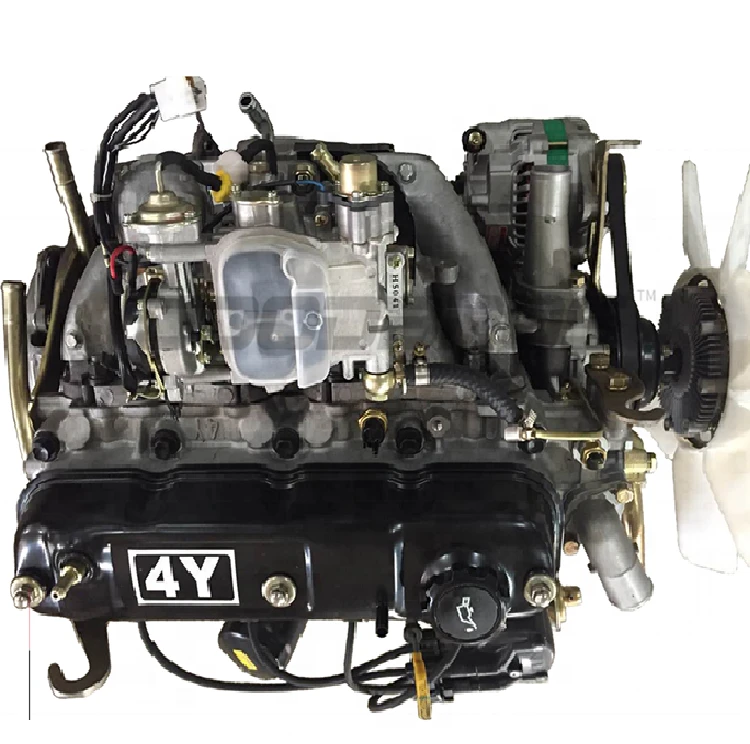Everything You Need to Know About the 4Y Engine and Its Performance
Why the Engine Is the Finest Option for Performance and Performance in Your Vehicle
The engine continues to be a pivotal element in vehicle style, mainly as a result of its significant impact on both efficiency and performance. As innovations in innovation make it possible for smaller engines to provide amazing power while maximizing fuel economic climate, the combination of features such as turbocharging and crossbreed systems becomes progressively essential. These advancements not only boost driving experience but likewise address ecological concerns. The inquiry emerges: just how do these components coalesce to redefine our understanding of auto efficiency? Exploring this balance exposes deeper insights right into the future of engine design.
Comprehending Engine Kind
Recognizing the various kinds of engines is vital for enhancing performance and efficiency in vehicle layout. The key engine types include interior combustion engines (ICE), electric engines, and crossbreed systems, each offering distinctive benefits and limitations.
Inner burning engines, which can be additional classified into gas and diesel variations, count on the burning of gas to generate power. Fuel engines commonly provide higher RPMs and much better acceleration, while diesel motor are recognized for their torque and fuel performance, making them ideal for heavy-duty applications.
Electric engines, on the various other hand, utilize electric motors powered by batteries or fuel cells. They offer instant torque distribution, leading to smooth acceleration and reduced emissions. The efficiency of electrical engines is dramatically more than that of ICEs, making them a popular option for eco-conscious consumers.
Crossbreed systems integrate both interior combustion and electric engines, leveraging the strengths of both innovations. They maximize fuel usage by making use of electrical power at lower rates and switching to fuel or diesel for greater rates or much heavier loads.
Selecting the right engine type is necessary for accomplishing desired performance metrics and ecological sustainability in modern automobile engineering.
The Influence of Engine Size
Engine size regularly plays a crucial function in identifying a car's efficiency and performance. Generally gauged in litres or cubic centimeters, engine dimension straight affects the power output and torque attributes of a car.
However, enhanced engine dimension usually associates with decreased fuel performance. Larger engines consume even more gas, resulting in higher emissions and operational prices. Producers need to balance the demand for power with the demand for gas economy. Smaller engines can provide sufficient efficiency for everyday driving while advertising far better effectiveness, making them a popular selection in mid-size and compact automobiles.
Furthermore, developments in engine style, such as turbocharging and straight gas shot, allow smaller sized engines to achieve power degrees comparable to their larger counterparts. This trend emphasizes the relevance of not solely concentrating on engine size however additionally thinking about overall lorry layout and technology (4y engine). Eventually, the effect of engine dimension on efficiency and performance emphasizes the requirement for customers to assess their details driving choices and demands when picking a car
Advanced Engine Technologies
Technologies in engine technologies have actually significantly reshaped the landscape of vehicle efficiency and effectiveness, structure upon the fundamental principles established by engine dimension. Especially, developments such as turbocharging and straight fuel injection have enabled smaller sized engines to provide power degrees formerly connected with bigger equivalents. Turbochargers compress air entering the engine, enabling enhanced power output without a matching rise in engine size, while straight shot enhances fuel distribution, enhancing combustion effectiveness.
Furthermore, variable valve timing systems have actually become an important technology, permitting engines to readjust valve procedure based upon driving conditions. This flexibility boosts both efficiency throughout velocity and gas performance during travelling. Crossbreed and electric engine modern technologies even more highlight the shift in automobile layout, integrating standard inner combustion engines with electric motors to make best use of efficiency while minimizing exhausts.
In addition, innovations in materials scientific research have actually resulted in lighter, a lot more durable engine parts, further improving efficiency and longevity. The integration of sophisticated electronics and engine control units additionally permits real-time modifications, making sure optimal performance throughout different problems. Jointly, these sophisticated engine modern technologies not just boost vehicle efficiency but additionally contribute to a more lasting auto future, demonstrating the recurring advancement of engine layout.
Balancing Power and Efficiency
Striking an equilibrium in between power and effectiveness is critical in modern auto layout as her latest blog producers look for to meet significantly rigorous exhausts guidelines while satisfying consumer need for performance (4y engine). The challenge hinges on maximizing engine attributes to deliver robust power outcome without sacrificing fuel economic situation
To achieve this balance, engineers employ various methods, such as turbocharging, which improves engine power forcibly in even more air, enabling a smaller sized engine displacement that improves gas performance. Variable valve timing innovations additionally play a substantial role, making it possible for engines to change their efficiency characteristics based on driving problems, thereby improving both power and efficiency.
In addition, developments in materials and producing strategies have caused lighter engine components, which lower overall vehicle weight and enhance gas efficiency without compromising power. Hybrid modern technologies have also emerged as a practical option, integrating traditional inner burning engines with electrical powertrains to offer an increase in efficiency while keeping reduced exhausts.

Future Patterns in Engine Design

Furthermore, the growth of advanced materials, such as high-strength alloys and light-weight compounds, is readied to revolutionize engine elements. These materials not only reduce weight however likewise enhance thermal performance, consequently maximizing performance. Furthermore, suppliers are exploring variable compression proportions, permitting engines to adapt to different driving conditions, enhancing both power outcome and gas economy.
Even more, the increase of fabricated knowledge and artificial intelligence in engine layout is allowing predictive maintenance and real-time performance optimization. This technology can result in engines that self-adjust for optimal efficiency based on driving patterns.

Conclusion
In conclusion, the engine works as a critical component in attaining ideal performance and effectiveness in modern-day cars. Advanced innovations, such as turbocharging and hybrid systems, boost power outcome while decreasing gas intake and discharges. The interplay in between engine size and style proceeds to evolve, driving innovations that stabilize thrilling efficiency with environmental sustainability. As vehicle design progresses, the find out this here concentrate on establishing effective, effective engines will stay critical in forming the future of transportation.
Additionally, innovations in engine style, such as turbocharging and direct gas shot, allow smaller sized engines to achieve power degrees comparable to their larger equivalents.Innovations in engine modern technologies have actually dramatically improved the landscape of automobile performance and performance, building upon the foundational concepts developed by engine size. Turbochargers press air getting in the engine, allowing for raised power output without a matching rise in engine dimension, while direct injection optimizes fuel distribution, boosting burning efficiency.
Crossbreed and electrical engine technologies even more highlight the change in vehicle design, combining conventional internal combustion engines with electric motors to optimize effectiveness while decreasing discharges.
Collectively, these innovative engine modern technologies not just boost automobile performance yet additionally add to a more sustainable automobile future, demonstrating the continuous advancement of engine layout. (4y engine)